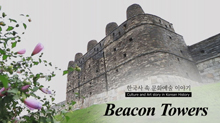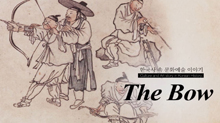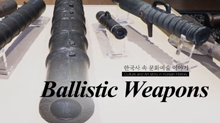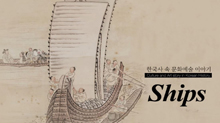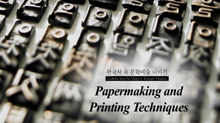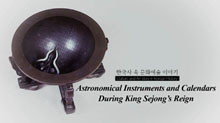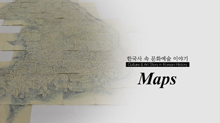The Story of Culture and Arts
- Image resource of Korean history
- Documents from History TextBooks
- Culture & Art Stories from Korean History
- Culture & Art Stories from Korean History - Korean
- National Institute of Korean History
- History net
- About the site
- Introduce
-
Numerous topics related to Korean culture and art are mentioned in middle and high school national history textbooks, but most of them are briefly described by era, making it difficult to understand their concepts, transition processes, and characteristics.
<Culture & Art Stories from Korean History> produces and provides video materials based on expert commentary on the flow, change process, characteristics and characteristics of each major topic in the field of culture and art in Korean history.

Scenario
The moment they came face-to-face with a long-hidden secret deep beneath the ocean!
Humans are slowly solving the mysteries of history that have eluded us for hundreds and thousands of years. What story can these boats, which were lost to the sea and to history long ago, now tell us?
How Much is Known about Ancient Ships?
Our ancestors have been making boats to ply rivers and oceans from long, long ago. The dugout canoe of Bibong-ri proves it. This boat is confirmed to be the oldest boat ever found in Korea.
Several other boats can been seen at the Bangudae Petroglyphs in Daegok-ri, Ulsan. It is thought that these boats, which could hold over a dozen people, were used for whaling in prehistoric times.
One of the genuine ship relics from after this period is the Yeongheungdo vessel (Yeongheungdoseon). It is speculated that this boat was used in the Unified Silla period for journeys on the high seas.
To this day, the most frequently discovered boats date back to the Goryeo period. The most well-known discoveries are shipwrecks Mado no. 1, 2 and 3, discovered just off the coast of Taean.
“The boat was flat-bottomed, formed by binding together several logs. For the exterior, large logs were bent and then stacked one atop the other. Long pieces called the garyong and the chagaryong would reinforce the structure (and keep it from warping). Also, one thing we can confirm that was unique to Goryeo ships was their vertical bows. This and similarly structured boats are considered to be the basic structure of traditional Korean boats, or hanseon (韓船).” Hong Sun-jae, Researcher of Arts and Sciences (National Research Institute of Maritime Cultural Heritage, Maritime Research Laboratory)
Goryeo-period boats were considered very structurally sound.
A total of 900 vessels, including both large and small boats, have been completed and fully outfitted. - Goryeosa [History of Goryeo], “Sega” [Royal Records], June 16, 1274 (Year 15 of King Wonjong)
At one time, Goryeo was forced by the Mongol Yuan Dynasty to construct 900 boats and to join the Mongols in an attempted military conquest of Japan.
Vessels both large and small were smashed to pieces by the waves. Only the Goryeo jeonseon (戰船) were strong and remained intact. - Wangun, Chuganseonsaeng Daejeonmunjip [Complete Works of Master Chugan]
But, on the voyage to Japan, the invasion fleet was caught in a strong typhoon. The Mongol Yuan boats were completely destroyed by the strong winds, only the Goryeo boats remaining unharmed.
Goryeo and Joseon period boats were generally made with flat bottoms. Compare this to the V-shaped hull of cheomjeoseon ships of neighboring China and Japan. But why did early Koreans make pyeongjeoseon, or flat-bottomed boats?
In the Goryeo period was created the joun system, a maritime transport network. It was the first system of its kind in Korean history. At the time, Koreans mainly traveled on the southern and western seas.
The tidal changes along Korea’s eastern and southern coasts are quite severe. During low tide when the mudflats were exposed, pyeongjeoseon ships were much safer as they were less likely to capsize.
What were ancient ships used for?
Let me tell you a story about Mado vessel No. 1, which was excavated in 2009.
Our ship set sail from Pogu, Jeolla-do, in 1208... It was filled to the brim with grains and other regional specialties of Jeolla-do, and we were headed for the Goryeo capital of Gaegyeong. But then, by heavens, off the coast of Taean. we suddenly ran aground. What could be done? This is how our ship found itself at the bottom of the sea.
Mado vessel No. 1 is believed to have been a jounseon, or transport ship. What leads us to confirm this conjecture are the ship’s mokgan. These wooden tablets contain such information as the ship’s destination, inventories of the ship’s cargo, and the intended recipient of that cargo.
The joun system that was temporarily suspended at the end of the Goryeo Dynasty started up again in the succeeding Joseon Dynasty. This can be determined from Mado vessel No. 4, thought to be a ship from the Joseon Dynasty.
Text on the ship’s mokgan reveal the vessel to be a jounseon that departed from Naju and was headed for Gwangheungchang.
“King Taejong had about 251 jounseon built and dispatched to the southern region. In the late Joseon period, they instituted a new tax system whereby the people could pay their tax duties with rice instead of the former regional specialties. For this reason, a lot of products needed to be transported to the capital. Individuals who owned a ship would lease it out for use as a jounseon. Boats such as Gyeonggang saseon (京江私船), privately-owned vessels that plied the capital’s Han River, were used, along with jitoseon (地土船), privately owned joun from different regions.” Jeong Jinsul, Former Planning Director of R.O.K. Naval Academy Museum
But why were ships given the important role of transporting goods?
A thousand seok in total, including 800 seok of wongok [grains paid as a tax] plus miscellaneous items - Takjji [Records of the Ministry of Taxation] (published in 1788)
It is said that a single jounseon was capable of transporting up to 1,000 seok worth of goods.
Provisions for two months amount to 4,000 seok, but if we are to include the horsemen and horse feed, the amount doubles. We will need at least 5,000 packhorses to carry it all. - Bibyeonsadeungnok [Records of the Border Defense Council], August 13, 1638 (Year 16 of King Injo)
By comparison, 5,000 horses were capable of carrying 8,000 seok. Six hundred farmers once transported 200 seok.
Six hundred farmers were only capable of carrying 200 seok of provisions at a time. - Bibyeonsadeungnok [Records of the Border Defense Council], October 27, 1638 (Year 16 of King Injo)
This goes to show the difference in efficiency between land transport with horses and people and sea transport.
There is also another kind of ancient ship whose use stood out.
This is a panokseon, an armored ship used during navy battles in the Imjin Wars with Japan. The most prominent feature of the panokseon is its multi-decked structure.
Because of this, rowers were able to safely row inside the panokseon while combat soldiers would go to a higher position to engage the enemy once they caught sight of them.
When a cannon fires, it recoils several li. Thus, a small boat cannot carry a cannon. - Seungjeongwon ilgi [Diary of the Royal Secretariat], June 7, 1637 (Year 15 of King Injo)
The flat-bottomed panokseon was extremely shock-resistant and recoiled very little after firing a gun. This was ideal for firing large-scale cannon.
And the wide, smooth gappan deck allowed the ship to accomodate more soldiers and cannon. All of these factors supported the Joseon navy in long-range battles.
“In 1555 (year 10 of King Myeongjong), occurred the eulmyo waebyeon, or attack by Japanese marauders in the eulymyo year. During the attack, none of the maengseon (early Joseon seonbak combat vessel) or small gyeongkoeseon that were supposed to stop them were able to respond. A direct response to this situation was the creation of the panokseon. The Joseon state steadily churned out panokseon; and just before the Imjin Wars that commenced in 1592, they had enough ships to replace all the old maengseon. The panokseon was one of the prime reasons Joseon was able to repel attacks during the Imjin Wars.” Jeong Jinsul, Former Planning Director of R.O.K. Naval Academy Museum
Our ancestors were able to harness their skills to create ships and utilize waterways from early on.
They truly understood the topography and characteristics of the land and were able to pass down this knowledge to later generations through their amazing ships.
[Epilogue]
Must-Know Facts on Culture and Art in Korean History
1. Early ships called pyeongjeoseon has a particular structure that was suited to the southern and western coastlines of Korea.
2. The nation used jounseon ships to collect and transport grain tax.
3. The flat-bottomed panokseon were the primary Korean warships during the Imjin Wars.


